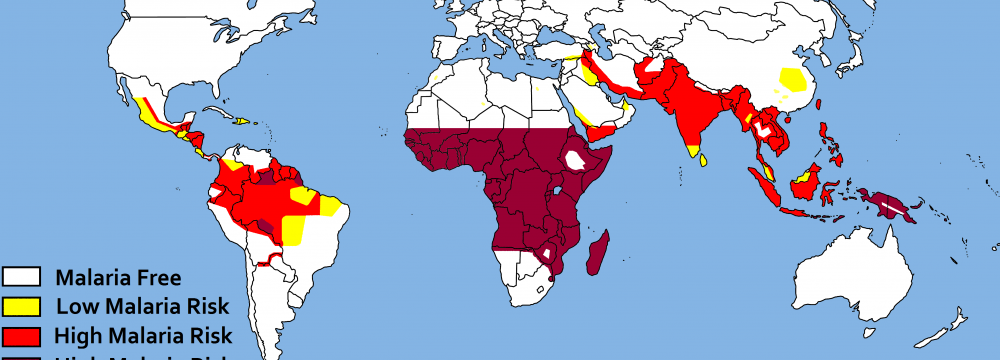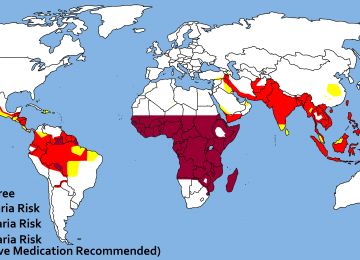With the start of autumn and the malaria outbreak season in the southern Bushehr Province, the disease surveillance and elimination program for malaria has been initiated among the high risk populations in Dashti County.
During the first five days of the program, 200 cases were diagnosed through blood tests in Ziyarat village in Kabgan Rural District, and the infected are under medical treatment. Afghan and Baluchi nationals working in shrimp farms in Ziyarat were among the infected.
A 14-day group treatment scheme has been launched that involves a healthcare team delivering medication to patients in Ziyarat on a daily basis, IRNA reported.
Parviz Ahmadi, hygiene deputy at Dashti’s Health Authority, said that the disease in under “complete control and the patients are receiving treatment.”
Abdolmohammad Khajeiyan, the deputy for hygiene at Bushehr University of Medical Sciences had earlier said that the rates of malaria infection had increased in the province mainly due to the increasing number of foreign migrants travelling to the region.
“Expansion of surveillance programs was also making it possible to identify infected individuals before the symptoms manifest,” he said.
The official urged all provincial medical staff to be on the alert for infections, pointing to the start of the malaria outbreak season in Bushehr every autumn.
“All migrants with symptoms and those who have just crossed the country’s eastern borders must be tested,” he stressed.
Malaria is a mosquito-borne infectious disease transmitted by the Anopheles genus. It is endemic in some parts of Iran and has infected people for years; 50 years ago, there were five million cases of malaria in the country but today Iran has developed the necessary strategies to reach elimination. Bushehr is a breeding ground for the mosquito due to its climatic conditions, and therefore there is high potential for the spread of the disease.
“With proper vector control the possibilities of transmitting the parasitic disease can be contained,” said Khajeiyan.
The deputy stressed that quick diagnosis is essential to preventing an outbreak. He also called on doctors to refer travelers from Iran’s eastern neighboring countries with suspected symptoms to the nearest medical center (Comprehensive Health Service Center) so that they can receive free treatment.
Elimination Phase
Iran has greatly reduced its malaria burden since the early 1990s and has a national goal to eliminate malaria by 2025.
The country has achieved an 85% decrease in reported malaria cases between 2000 and 2010, from 12,294 cases to 1,847 cases, and is categorized in the elimination phase by the World Health Organization (WHO).
Since 1999 there have been less than five deaths due to malaria annually. In 2010, only 3% of the population was considered at-risk of malaria transmission.
Nearly all malaria transmission occurs in the southeastern areas of the country near its borders with Afghanistan and Pakistan, and transmission peaks in August and September. In 2010, more than 90% of malaria cases were reported in the southeastern region in three provinces— Hormozgan, Kerman, and Sistan-Baluchistan—all of which are near the border with Pakistan.
A majority of the population in these provinces live in rural areas and have less access to primary health care services, the lowest literacy levels, and the highest maternal and child mortality rates.
The national malaria strategic plan has set goals to reduce local malaria transmission and continue to prevent malaria deaths in targeted districts though early diagnosis, prompt and effective treatment, and vector control through indoor residual spraying (IRS) and distribution of long-lasting insecticide-treated nets, in addition to establishing a malaria early warning system for controlling malaria epidemics. Through these efforts, Iran is aiming to become malaria-free by 2025, the globalhealthsciences.ucsf.edu reports.
A Global Fund grant in 2011 helped Iran to develop a malaria early warning system and epidemic preparedness plan to improve awareness in targeted areas by increasing training of microscopists, rural malaria mobile teams, and community volunteers. With only 1,847 cases reported in 2010 and continued cross-border collaborations with endemic neighbors, Iran is developing the necessary strategies to reach elimination.
Although Iran faces a significant risk of malaria importation across its borders with Afghanistan and Pakistan, it is working to improve its cross-border collaborations. Further, the malaria early warning system and outbreak preparedness plan for epidemics is helping to reduce transmission in the remaining areas as Iran works toward malaria elimination, the report said.





